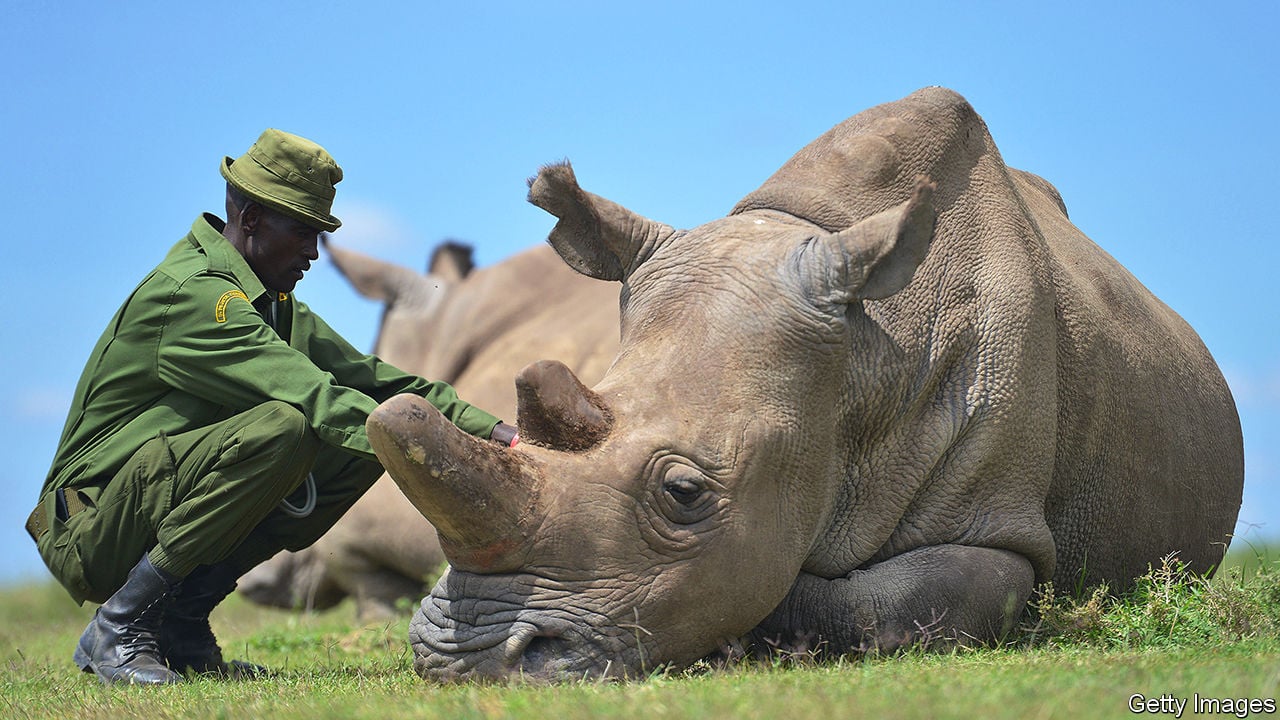By Seth Onyango
Scientists at South Africa’s University of the Witwatersrand are implanting radioactive chips into rhino horns in what promises to disrupt the poaching trade.
Embedding tiny, harmless radioactive isotopes into rhino horns of living rhinoceros would enable precise tracking and monitoring, making it nearly impossible for smugglers to move the horns undetected.
The Rhisotope Project, founded in 2021 by Professor James Larkin, began with the injection of chips into the first of 20 rhinos last month. It has already shown significant promise and comes at a critical time, as rhino populations continue to dwindle due to relentless poaching driven by the high demand for rhino horn in certain markets.
Researchers are, however, optimistic that this novel method will provide a much-needed solution to the crisis.
These chips need a simple boost every five years and do not harm the rhinos, making them a sustainable and long-term solution.
With rhino poaching driven by high demand in Asian markets, particularly in Vietnam and China, introducing radioactive chips could be a significant deterrent.
“Ultimately, the aim is to try to devalue rhinoceros horn in the eyes of the end users, while at the same time making the horns easier to detect as they are being smuggled across borders,” Professor Larkin shared in a statement with the University of the Witwatersrand in June.
In 2023, South Africa saw 499 rhinos killed, an 11% increase from the previous year, highlighting the urgent need for effective anti-poaching measures, according to AFP.
Expanding the use of radioactive chips could be particularly impactful in countries like Kenya and Tanzania, which also struggle with high poaching rates.
These nations are home to large populations of elephants, a species whose ivory is highly sought after in illegal markets.
By implanting radioactive chips into elephant tusks, conservationists hope to replicate the success seen with rhinos, creating a formidable obstacle for poachers.
Elephants, due to their size, would probably require bespoke chips, carefully designed to ensure they do not affect the animals’ behaviour or well-being.
The adaptability of this technology, ergo, makes it a versatile tool in the fight against poaching—part of a broader strategy to enhance wildlife protection measures.
Traditional methods, such as stricter enforcement of poaching laws and increased patrols in wildlife reserves, have not been sufficient to curb the rise in poaching incidents.
The high-tech approach of using radioactive chips offers a new dimension to these efforts, providing a means to track and trace illegal wildlife products with unprecedented accuracy.
International conservation organisations and governments would closely monitor the progress of this initiative.
Beyond Africa, this technology could also be applied to protect wildlife in Asia and South America, where poaching and illegal trade pose significant threats to biodiversity.
Tigers, for example, are heavily targeted for their bones and skins in several Asian countries. Adapting the radioactive chip technology for use in tigers could create similar deterrents and tracking capabilities, significantly reducing the profitability of illegal poaching operations.
bird story agency
Scientists at South Africa’s University of the Witwatersrand are employing a novel method to disrupt the poaching trade by implanting radioactive chips into rhino horns. This initiative, known as the Rhisotope Project and founded in 2021 by Professor James Larkin, involves embedding harmless radioactive isotopes into the horns, enabling precise tracking and monitoring to prevent smuggling. Early results from injecting chips into the first 20 rhinos are promising, offering a sustainable solution as the chips need only a simple boost every five years.
Given the high demand for rhino horns in Asian markets, this technology could serve as a significant deterrent. According to Professor Larkin, the aim is to devalue rhino horns for end users while making the horns easier to detect during smuggling. In 2023, the urgency of effective anti-poaching measures was highlighted by the killing of 499 rhinos in South Africa, a rise from the previous year.
For broader impact, the technology could be extended to countries like Kenya and Tanzania, and even adapted for use in elephants and other endangered species, by implanting bespoke radioactive chips into tusks and other valuable body parts. This high-tech approach offers a new dimension to traditional anti-poaching methods, providing precise tracking and monitoring capabilities. International conservation organizations are eager to see its progress, with potential applications beyond Africa to protect endangered wildlife in regions such as Asia and South America, targeting species like tigers.






